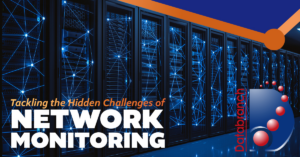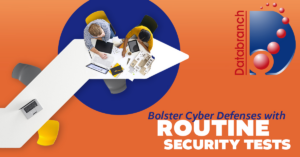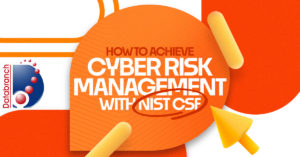
Worried about cyberattacks hitting your business? You’re not alone.
Cyberattacks pose a real danger to businesses like yours and without a solid incident response plan, your business won’t be able to recover quickly, resulting in extensive losses. The good news, however, is that an incident response plan can help.
Through this blog, we’ll show you the common mistakes, myths and misconceptions that can stop you from building a strong response plan. We’ll also share simple solutions that will help you safely navigate cyber challenges.
Avoid these Mistakes to Build a Strong Response Plan
Here are a few common mistakes that all businesses should avoid:
Mistake 1: Thinking cyber incidents only come from external attacks
- By ignoring internal threats, you’re creating opportunities for cyberattacks.
- Internal mistakes, like ineffective processes or human errors due to inadequate training, can also lead to data breaches.
Solution: Invest in your employees and set up a process
- Train your employees on cybersecurity best practices and establish protocols for handling sensitive information.
- Periodically review your internal processes. This will help you find and resolve issues in your procedures that could lead to data leakage.
- Looking for an effective cybersecurity training platform? Reach out to Databranch today to discuss our Breach Prevention Platform and Security Awareness Training that comes with simulated phishing tests.
Mistake 2: Focusing only on technology
- You can’t build an effective incident response plan by solely focusing on technology. While tech solutions are valuable, they’re only effective when they are efficiently leveraged by a team of trained personnel.
- A solid response plan goes beyond technology and includes communication plans, legal considerations and damage control strategies.
Solution: Build a complete response plan
- Train your response team on both tools and processes. Don’t focus solely on the technology.
- Develop clear communication protocols.
- Define clear roles and responsibilities.
- Ensure your team understands your legal obligation to report and comply with data breach regulations.
Mistake 3: Not updating your response plan
- It’s a common misconception that an incident response plan, once created, need not be updated. However, the truth is, without regular review, updates and practice, a response plan will become ineffective.
- Also, without simulations and post-incident analysis, you won’t be able to find the root cause of a problem and avoid future reoccurrence.
Solution: Consistently review your response plan
- Establish a process to hold regular reviews.
- Adapt your response plan to keep up with the evolving threat landscape.
- Conduct periodic simulations to refine your response strategy and ensure team readiness.
The above-mentioned solutions will help you build a proactive incident response plan. However, the best strategy is to get the help of experts, like Databranch, who have the proper resources and tools.
Databranch not only offers a suite of cost-effective managed services that proactively monitor and support your network and technology infrastructure, but our backup and recovery solution can quickly restore your environment and have you up and running if a disaster were to occur.
Building Resilience: Partner for a Robust Incident Response Plan.
Ready to fortify your business against cyberthreats? Use the form below to download our checklist and take a step towards starting your incident response plan.
All businesses today must have a solid incident response plan against ever-evolving cybersecurity threats. That’s where Databranch can be your strategic partner and your first line of defense against cyberstorms.
Choose a partner who can give you complete peace of mind. Reach out today at 716-373-4467 option 6, or [email protected].
Read More

In today’s business landscape, data isn’t just power — it’s the very lifeline that fuels business decisions, drives innovations and shapes strategies. However, businesses often find it difficult to effectively manage the vast amounts of data they hold, and that’s where data management comes into play.
Simply put, data management is all about collecting, storing and analyzing data in the most efficient way possible to help businesses like yours make informed decisions, optimize operations and ensure cybersecurity.
In this blog, we’ll look at the consequences of improper data management and discuss how businesses like yours can effectively deal with these challenges.
Potential Consequences of Improper Data Management
Failure to manage your data effectively can lead to the following consequences, including missed opportunities, inefficiencies and even business-ending events.
Poor Decision-Making
Imagine navigating the roads using a faulty map. You’re bound to end up in the wrong place. Without accurate data, you will be charting a flawed business trajectory toward wasted resources, missed market opportunities, and ultimately, strategic missteps that hurt your business.
Reduced Efficiency
If your employees are working in siloed systems, drowning in a sea of duplicate data and wasting precious man-hours sorting the mess, you won’t have time for productive work. Ineffective management erodes productivity and keeps your business from growing.
Increased Risk
A leaky boat is bound to sink. Poor data management can sink your business by exposing you to security risks and even data breaches that could result in non-compliance with regulations, leading to legal issues and fines.
Implementing a well-thought-out cyber risk management strategy can significantly reduce overall risks and strengthen your cyber defenses. Visit us here to learn more.
Decreased Customer Trust
Mishandling of customer data is like breaking a sacred covenant. It fractures your reputation and erodes trust, leading to client disengagement and a tarnished brand image that could be difficult to rebuild.
Competitive Disadvantage
Think of a large, inaccessible gold mine. Now, imagine all that untapped precious metal. That’s exactly what businesses that lack data management strategies resemble. If you fail to leverage data, you are bound to lose ground to businesses that use analytics and AI to unlock groundbreaking insights and fuel future success.
Increased Costs
Poor data management slowly eats away at your revenue and bloats your expenses. You end up incurring expenses on storing duplicate or irrelevant data that do not contribute to your business growth.
Data security incidents can also bring business to a grinding halt, costing a business thousands. Do you know what the cost of downtime is for your business? Visit our Recovery Time Calculator if not.
How We Can Help with Data Management
The good news is that you can partner with trusted guides who are equipped with the expertise and resources to transform your hidden data liabilities into revenue-churning assets.
Here’s how an IT service provider can put you on the road to success:
1. Never Worry About Data Loss
Adopting a comprehensive backup and business continuity and disaster recovery (BCDR) strategy is a necessary addition to every data management plan.
Databranch offers our BCDR solution from Datto, the leader in Total Data Protection. Not only will the Datto backup all your data to the device itself, but it will also backup everything to 2 separate offsite cloud storage locations.
So, in the event that the local device is destroyed, you can still access your information even from a remote location.
With Datto you will receive daily backup verifications and screen shots of your virtual servers give you peace of mind and ensure that your backup data is working and accessible to you when you need it.
2. Get Advanced Protection
Databranch is here to keep your business safe from cyberthreats that are lurking in the dark. We allow you to focus on your business by knowing that your assets are being protected with advanced security measures that can repel sophisticated attacks.
Our managed client platform provides a comprehensive suite of security tools that safeguard your network and bolster your cyber defenses. Reach out to our team today to learn more.
3. You Have Access to Top IT Experts
Imagine having a team of IT experts working for you without breaking the bank. Data problems can bring your business to a halt, but with the help of Databranch, you can easily manage or resolve any data-related issues anytime, anywhere.
4. Always Stay Compliant
Data compliance regulations related to privacy and security are always evolving. It can be tough to keep up with rules and regulations while managing the day-to-day activities of your business. However, Databranch provide some guidance which will help you stay ahead of the curve and ensure you meet the stipulated regulations.
5. Tailored Strategies that Lead to Success
Tailor made data management strategies will help meet your business goals and allow you to transform your data into a strategic asset.
Secure Your Future
Your data is your gold mine with precious untapped potential. However, navigating the tricky data management terrain on your own can be challenging — and that’s where Databranch comes in. Consider partnering with us so we can help you unlock the power of data for your business.
Reach out to Databranch today at 716-373-4467 option 6, or [email protected] to schedule a meeting with one of our experienced team members.
You can also download our eBook today to start the process of turning your data into a powerful engine for success.
Read More

Your network is your business’s lifeline.
A healthy and secure network is critical for seamless communication and operational efficiency. That’s why it’s crucial to proactively identify issues and optimize performance through continuous network security monitoring.
However, as you keep a close watch, you’ll discover many issues lurking beneath the surface. In this blog, we’ll take a look at these hidden challenges and how to tackle them to ensure robust network security.
Hidden Challenges of Network Monitoring
Here are some of the challenges that hide in plain sight and impact your business more than you realize:
Data Overload
There are various devices and systems connected to a network, and at times they can generate an overwhelming volume of information, slowing down the monitoring process.
The sheer abundance of information makes it challenging to manage, analyze or derive any meaningful insights from the data. In such a situation, you can easily miss out on critical issues that can adversely affect your business.
Complexity
Modern networks are complex. Every device, application or system within the network is diverse. Without sophisticated tools and specialized expertise, it would be like solving a puzzle blindfolded.
The best way to deal with this challenge would be to reach out to Databranch who can efficiently streamline the entire monitoring process.
Integrations with Legacy Systems
Integrating older legacy systems seamlessly into modern monitoring frameworks can be tough. Failing to properly integrate older tools with current technology can leave visibility gaps and affect the overall performance.
That’s why it’s mission-critical for your business to implement monitoring solutions that not only keep pace with evolving technologies but also seamlessly integrate with older systems as well.
Costs
To ensure your network monitoring tools offer peak performance, you must keep up with the latest tech. However, monitoring tools are expensive, and businesses with budget constraints might find themselves vulnerable to the latest cyberthreats.
That’s why Databranch offers a suite of cost-effective managed services that proactively monitor and support your network and technology infrastructure.
Scalability
As your business grows, so do the number of devices connected to your network and the volume of data as well. However, if your monitoring tools can’t scale to meet the need, it will adversely affect its ability to provide accurate and timely insights.
To overcome scalability issues, you must invest in monitoring solutions that can expand and keep up with your growing needs.
Privacy Concerns
As part of the network monitoring framework, the tools and solutions may record and analyze sensitive data, raising compliance concerns and privacy challenges. The problems related to privacy arise when the network monitoring practices don’t meet compliance standards, leading to legal repercussions and penalties.
That’s why it is a good practice to implement robust security measures, adopt encryption technologies and adhere to relevant privacy regulations. The NIST Cybersecurity Framework is a popular, user-friendly framework that empowers business leaders like you to boost organizational cybersecurity.
Businesses with solid cyber risk management strategies can build formidable cyber defenses, minimize risks, and reduce compliance and privacy concerns.
Skill Gaps
To efficiently monitor your network, you need professionals with expertise in network monitoring. However, it can be challenging to hire employees who can achieve results without compromising your business needs.
Databranch provides a 24 x 7 proactive monitoring and alerting service which allows you to take this off your plate and focus on your business needs.
Dynamic Environments
A network is like a thriving ecosystem that is constantly evolving, and your network monitoring efforts must stay up to date if you want to stay ahead of potential issues.
To address the challenge of dynamic environments, you must embrace agile monitoring solutions, leverage automation for quicker adjustments and adopt continuous improvement practices.
Achieve Sustained Growth
Overcoming your network challenges while ensuring your business runs smoothly can be tough, especially if you have to do it all on your own. Reach out to Databranch today at 716-373-4467 option6, or [email protected] if your business needs help. Not only can we secure and optimize your network, but also help your business achieve sustained growth.
Ready to transform your network challenges into opportunities? Download our checklist today to see where you network may need our expertise!
Read More

Businesses today face a range of cybersecurity threats, from social engineering attacks like phishing, to sophisticated ransomware. For business leaders like you, protecting your network is crucial since it is the lifeline of your business.
Any vulnerability in your network can compromise your sensitive data, operational integrity, and stakeholder trust. That’s why you must understand and address these threats through proactive measures, such as routine security scans and network testing.
In this blog, we’ll discuss the role of a robust network and demystify network testing intricacies.
Benefits of Routine Security Tests
A security test typically assesses the effectiveness of an organization’s security measures and protocols. Here are some of its benefits:
Identifies Vulnerabilities:
Through regular security scans, you can easily identify weaknesses in your system and proactively address potential threats before they can be exploited by cybercriminals.
It is important to conduct vulnerability assessments regularly, at least every quarter if not more frequently. This is due to the dynamic nature of information technology. Many changes occur on a day-to-day basis that can introduce new exposures associated with information security.
Security shortcomings found during a vulnerability assessment can almost always be fixed. Many times, the fixes are very easy to accomplish.
Assesses Security Measures:
Regular security tests allow you to establish continuous monitoring of security protocols. This helps you gauge the effectiveness of your security measures and make necessary changes when needed.
Here at Databranch, our Managed Service plans offer proactive monitoring tools that helps us detect threats before they can impact your network. They also provide increased protection from malware, ransomware, and phishing compromises.
All Databranch Comprehensive Care and Foundation Security clients also have scheduled automatic patching and Windows updates on their devices.
Ensures Compliance:
Security tests help align your security practices with industry standards and reduce the risk of your business running into any compliance issues.
Prevents Data Breaches:
Through routine security scans, you can easily identify and address vulnerabilities and fortify your organization against unauthorized access and potential data breaches.
Optimizes Incident Response:
Regular testing helps you refine and improve your incident response plan and ensures your security preparedness plan is effective and up to date. Simply put, being able to restore and recover important business data after a disaster is no longer enough.
Intelligent Business Continuity is Databranch’s answer to not only ensuring that your data is restored to its former state, but restored quickly, with little to no downtime or interruption to your business.
Strengthens Resilience:
Regular security testing helps you build a solid security posture, enhancing your organization’s ability to endure and recover from cyberattacks.
Helps Avoid Financial Losses:
By taking proactive measures to identify and address security risks, you can prevent potential financial losses associated with data breaches, legal implications and operational disruptions. Visit our website here to learn just how costly it could be if your business were to experience a disruption.
Fosters Continuous Improvement:
Regular testing fosters a culture of continuous improvement, allowing you to adapt and evolve your security strategies based on emerging threats and industry best practices.
Essential Security Testing Methods
By leveraging security testing methods, you can assess the effectiveness of your organization’s security measures. Here are two of the most efficient methods that can help you build a robust cybersecurity landscape for your business:
Penetration Testing:
Also known as pen testing, this involves simulating real-world cyberattacks on an organization’s network. The simulations provide valuable insights that help organizations identify and address security gaps before they can be exploited by cybercriminals.
Vulnerability Assessments:
This method involves using automated tools to scan networks, systems and applications for known vulnerabilities, misconfigurations or weaknesses. It helps organizations build a robust cybersecurity posture by proactively prioritizing and addressing potential threats before they can do any harm.
Boost Security Effortlessly
When it comes to the security of your network, you can’t take any chances. That’s why you should partner with Databranch and let the experts handle the heavy lifting. We can efficiently manage security testing for you and ensure your digital defenses stay protected. Contact us at 716-373-4467 option 6, or [email protected] for a no-obligation consultation and take the first step towards a more secure future.
Download our infographic today for a condensed roadmap on how routine security scans can optimize your network!
Read More

Keeping sensitive data and critical tech safe from cyberattacks is crucial for businesses like yours. Your survival and growth depend on how well your organization can withstand cyberthreats. That’s where cyber risk management comes into play.
Businesses with solid cyber risk management strategies can build formidable cyber defenses and reduce risks without compromising business growth. Besides enhancing security, it also ensures your business stays compliant.
In this blog, we’ll share the core principles of cyber risk management and show you how integrating it with a simple but effective security framework can help you achieve strategic success.
Key Characteristics of Risk-Based Cybersecurity
Risk-based cybersecurity helps organizations focus their efforts and resources on the most critical risks. This approach aims to reduce vulnerabilities, safeguard what matters most to you and ensure you make informed decisions.
Here are the key characteristics of risk-based cybersecurity:
Risk reduction: By proactively identifying and neutralizing threats, you can reduce and minimize the potential impact of a cyber incident.
Prioritized investment: By identifying and assessing risks, you can concentrate your investment efforts on areas that need your attention most.
Addressing critical risks: Dealing with the most severe vulnerabilities first can help you strengthen your business security. That is why it is important to conduct vulnerability assessments regularly, at least every quarter if not more frequently.
All Databranch Comprehensive Care and Foundation Security clients have scheduled automatic patching and Windows updates on their devices to assist with vulnerability management. Visit us here to learn how we can help take this off your IT plate.
Cyber Risk Management Frameworks
Cybersecurity risk frameworks act as a guide that helps businesses achieve the full potential of a risk-based approach. Here are several ways frameworks can help you enhance your current cybersecurity posture:
- Takes away the guesswork and give businesses a structured way to assess their current cybersecurity posture.
- Helps organizations systematically focus their investments on addressing the most critical and relevant risks.
- Provides organizations with the right guidance that helps build security, which is crucial for building customer trust.
- Are built using controls that have been tried and tested. They essentially help businesses implement effective security controls.
- Designed to help organizations achieve compliance with government and industry regulations.
NIST Cybersecurity Framework
The National Institute of Standards and Technology Cybersecurity Framework (NIST CSF) is a popular, user-friendly framework that empowers business leaders like you to boost organizational cybersecurity. Think of it as a valuable tool created by top security experts to help you protect and secure your digital assets.
Here’s how the NIST CSF supports a risk-based approach:
- It helps you understand your risk by identifying what is most valuable to you.
- It gives you a high view of people, processes, technology, information and other business-critical aspects that need to be secured from threats so your business can operate successfully.
- It helps you prioritize your risks based on their impact on your business.
- It helps you allocate your resources where they matter most and ensures you maximize your investment.
- It promotes continuous monitoring and helps you adapt to evolving threats.
Secure your Future
Safeguarding your business from cyberthreats is critical for the survival and growth of your business. Don’t leave your business security to chance. Partnering with Databranch as your managed IT provider, means your business will have the security of knowing that your network is being monitored and maintained on a 24/7 basis.
Download our infographic, “Assess Your Cyber-Risks in 7 Critical Steps,” and strengthen your defenses against lurking cyber dangers.
Read More
 IMAGE SOURCE: https://pixabay.com/photos/cyber-security-internet-network-4610993/ An effective way to bolster your business’s data security is to work with a Managed Service Provider (MSP) or I.T. Service Provider (ITSP) like Databranch. They address network vulnerabilities to prevent cyber criminals from exploiting them.
Besides monitoring and organizing your servers, a Managed Service Provider (MSP) or I.T. Service Provider (ITSP) plays a pivotal role in the cybersecurity program of your business. They implement several strategies to shield your network from attacks and protect your data.
For instance, many providers use email authentication protocols to monitor your server’s vulnerabilities. They can keep users from accidentally accessing malicious websites by determining spam emails containing malware or viruses. This results in enhanced system security.
Another common practice is training your employees to ensure they follow the highest security standards. This is especially important if you have remote team members since there’s no way to keep track of their activities. To tackle this issue, an MSP or ITSP teaches your staff how to operate safely to avoid harm to your company’s infrastructure and reputation.
On top of that, an MSP or ITSP can neutralize various threats due to their proactive approach. They offer several tools such as firewalls and endpoint detection to control the traffic and stave off cyber attacks. Also, they can install antivirus software and email security to stop intrusion attempts.
Needless to say, an MSP or ITSP can shield you from a wide array of cybersecurity issues. But it’s vital to work with the right provider.
To ensure this happens, you should look for and abide by the best practices for an MSP or ITSP in the cybersecurity space. This article will examine what they are.
THE 8 BEST PRACTICES
PRACTICE #1 – ENFORCE MULTI-FACTOR AUTHENTICATION (MFA)
Cybercriminals are becoming proficient at accessing your credentials, so it’s critical to enable MFA for all your users.
It consists of three elements: a password, security token, and biometric verification. Consequently, if attackers breach one security layer, they’ll still have to do a lot of digging to access your information.
PRACTICE #2 – MAKE PATCHING A PRIORITY
Application and operating system exploits are common. Hackers target them to access your system and compromise your data, but you can prevent this through regular patching.
Making sure your system is up to date with the latest security standards decreases the risk of exploitation.
PRACTICE #3 – CONDUCT REGULAR CYBERSECURITY AUDITS
An MSP or ITSP must be aware of on boarding, off boarding, and lateral movements within an organization. This warrants frequent cybersecurity audits to assess the competency of your team.
Many MSPs or ITSPs hire third-party companies to perform their security audits. They can detect if a person who no longer needs access to the network still has it. It’s something that can endanger the client’s information, especially if the individual is a former employee.
Conducting regular audits mitigates this risk. It enables an MSP or ITSP to implement some of the most effective access privilege limitations:
- IP restrictions – These security measures ensure that only users who can access your local network can utilize remote administration tools.
- RMM software updates – Software vendors typically dispatch updates to fix vulnerabilities and patch numerous security gaps.
- RDP (Remote Desktop Protocol) Security – This Windows native administration tool reduces the chances of ransomware attacks in your organization.
PRACTICE #4 – HAVE AN OFF-SITE BACKUP
Backups are crucial for tackling malicious activities and ensuring operational continuity after cyber attacks.
They also help address whether the company and its clients can access the latest version of their data and applications. This feature is vital for enterprises that must adhere to compliance requirements, including PCI-DSS and HIPAA.
But besides implementing on-site backups, your MSP or ITSP should also set up off-site versions. If attackers compromise your RMM software, they can most likely reach on-site backups, too.
So, to avoid disasters, businesses should have an off-site backup accessible to only a few people. It should also be offline for greater security.
(Databranch is a proud Datto Diamond Partner and can help your organization implement a true business continuity/data protection solution for your organization.)
PRACTICE #5 – INCORPORATE LOG MONITORING
 IMAGE SOURCE: https://pixabay.com/photos/startup-business-people-students-849804/ Log monitoring is analyzing your logs for potential glitches. As an MSP or ITSP scrutinizes your records, they can detect traffic from harmful sources and provide a clear idea of threat patterns. And over time, they can deploy countermeasures to seal these gaps.
For example, cybersecurity experts use reliable security information and event management (SIEM) tools. They facilitate scanning through piles of information to enable faster threat detection.
PRACTICE #6 – LAUNCH PHISHING CAMPAIGNS
Phishing cyber criminals target your team members with emails or text messages, posing as legitimate institutions to steal your data. Unfortunately, most attacks succeed because of human error, meaning your MSP or ITSP should be aware of and monitor employees’ behavior.
Setting up fake phishing campaigns is a great way to test your team’s ability to respond to phishing attacks. It allows you to pinpoint and improve inadequate responses, bolstering data security.
To learn more about Databranch’s Breach Prevention Platform which includes monthly simulated phishing attempts and continuous end-user security awareness training, click here or email: [email protected]
PRACTICE #7 – CHOOSE YOUR SOFTWARE CAREFULLY AND SECURE ENDPOINTS
From small browser plugins to large-scale business systems, be sure your providers take data protection and cybersecurity seriously. Learn about their commitment to these aspects before purchasing their application.
Furthermore, employ web filtering tools, antivirus software, and email authentication to fend off ransomware attacks through malicious emails. Ensure each endpoint and your virus definition library are secure and up to date with the latest standards.
PRACTICE #8 – SET ALERTS AND DOCUMENT EVERYTHING
An MSP or ITSP that configures their systems to receive alerts upon system changes can work proactively and tackle threats early on. Many platforms automate this process through rules templates, personalization, and direct tickets to the PSA. This eliminates manual digging, saving precious time.
Another useful strategy is to document your cybersecurity information, such as your defense mechanisms, emergency guidelines, and disaster recovery plans. You should also review it regularly to help preempt cyber attacks.
CYBERSECURITY IS PARAMOUNT
While digitalization has significantly streamlined your operations, it’s also made you more susceptible to data theft.
To ensure cyber criminals don’t get their hands on valuable information and ruin your reputation, your MSP or ITSP needs to adopt well-established security practices.
But if your provider hasn’t introduced off-site backups, regular patches, and employee training, you’re not getting your money’s worth. Hence, you may be frustrated since your provider isn’t delivering the necessary results.
This makes you a sitting duck for cyber criminals. You need to resolve the issue as soon as possible.
Databranch can help you do so. Reach out to us for a quick 15-minute chat at 716-373-4467 x 15 and our tech experts will do their best to show you a way out of your cybersecurity dead end.
Article used with permission from The Technology Press.
|
Read More















